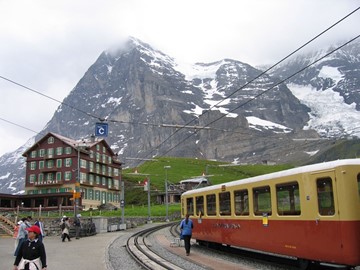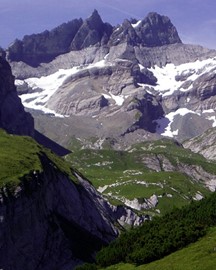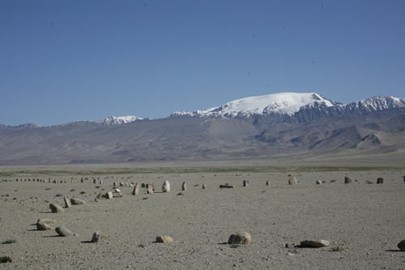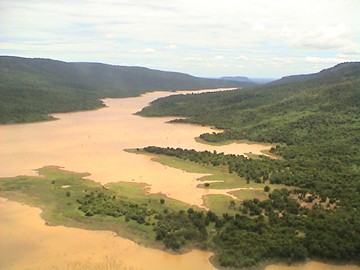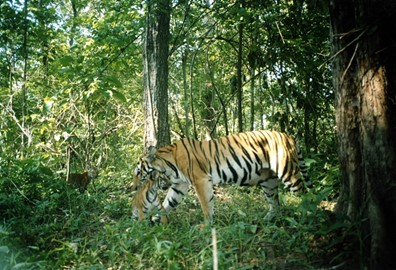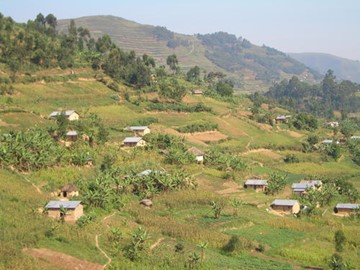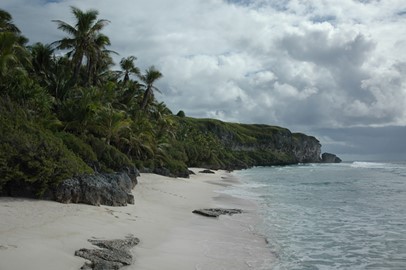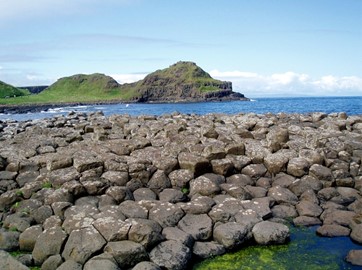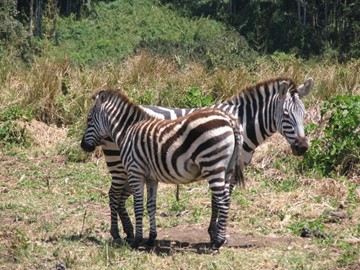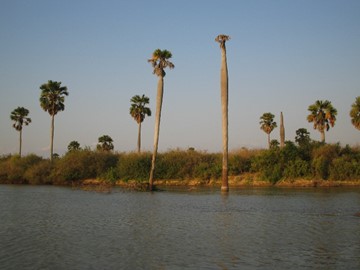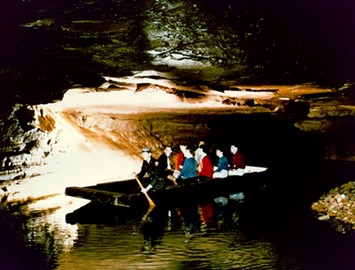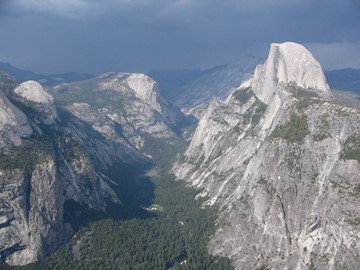category :: natural
Central Suriname Nature Reserve
The Central Suriname Nature Reserve, a UNESCO World Heritage Site in Suriname, is a pristine tropical rainforest ecosystem formed in 1998 by merging three existing reserves with support from Conservation International and the government. Recognized in 2000 for its outstanding biodiversity, it safeguards a variety of habitats including montane and lowland forests, granite domes, and the upper watershed of the Coppename River. The reserve hosts over 5,000 plant species, 400 bird species like the Guiana Cock-o... Read More
Swiss Alps Jungfrau Aletsch
The Swiss Alps Jungfrau-Aletsch, a UNESCO World Heritage site, showcases a stunning landscape of towering peaks, expansive glaciers, and deep valleys, recognized for its exceptional natural beauty and geological significance. This protected region is home to the largest glacier in the Alps and a rich diversity of flora and fauna, thriving in one of Europe’s most pristine alpine environments. It serves as a vital testament to the Earth’s climatic and environmental evolution, drawing global attention for its ... Read More
Swiss Tectonic Arena Sardona
The Swiss Tectonic Arena Sardona, a UNESCO World Heritage site in Switzerland, showcases a stunning example of mountain-building through continental collision. It features the Glarus Thrust, where ancient rocks dramatically overlie younger ones, offering a clear, three-dimensional view of tectonic processes that shaped the Alps. Recognized since the 18th century as a key geological site, it continues to inspire scientific study and captivate visitors with its rugged peaks, glaciers, and the famous Martinslo... Read More
Tajik National Park
Tajik National Park, a UNESCO World Heritage site in Tajikistan, is renowned for its stunning natural beauty and rich biodiversity. The park features dramatic mountain landscapes, including some of the highest peaks in Central Asia, alongside pristine lakes, rivers, and glaciers. It serves as a critical habitat for rare species like the snow leopard and Marco Polo sheep, making it a vital conservation area. This protected region also holds cultural significance, with ancient archaeological sites and traditi... Read More
Khao Yai Forest
Khao Yai Forest, a UNESCO World Heritage site in Thailand, is a biodiverse tropical rainforest renowned for its rich ecosystems and stunning landscapes. It hosts an array of wildlife, including elephants, gibbons, and rare bird species, alongside cascading waterfalls and scenic trails. Recognized for its ecological significance, the forest serves as a vital conservation area and a popular destination for nature enthusiasts.
Thungyai Huai Kha Khaeng
The Thungyai-Huai Kha Khaeng Wildlife Sanctuaries, a UNESCO World Heritage site in Thailand, form a vast, pristine conservation area along the Myanmar border. Recognized in 1991, these contiguous sanctuaries encompass diverse forest types, from tropical dry forests to savannas, and host an exceptional array of biodiversity, including tigers, elephants, and numerous rare species. The rugged landscape, with folded mountains and intact river systems, offers stunning natural beauty and serves as a critical stro... Read More
Ichkeul
Ichkeul National Park, a UNESCO World Heritage site in Tunisia, is a vital wetland ecosystem renowned for its rich biodiversity. It serves as a critical wintering ground for hundreds of thousands of migratory birds, including rare species like the white-headed duck and ferruginous duck. The park’s unique combination of lake, marshes, and surrounding hills supports a diverse range of flora and fauna, making it an ecological treasure. Its significance as a natural haven has earned it international recognition... Read More
Bwindi Impenetrable
Bwindi Impenetrable National Park, a UNESCO World Heritage site in Uganda, is renowned for its rich biodiversity and dense, ancient rainforest. It is home to nearly half of the world’s endangered mountain gorilla population, offering a sanctuary for these majestic creatures. The park also supports a variety of other wildlife, including rare birds and primates, alongside unique plant species thriving in its rugged terrain. This ecological treasure draws researchers and eco-tourists eager to explore its natur... Read More
Rwenzori Mountains
The Rwenzori Mountains, a UNESCO World Heritage site in Uganda, are a stunning range known for their snow-capped peaks, including Margherita Peak, the highest point at 5,109 meters. Often called the 'Mountains of the Moon,' they feature diverse ecosystems, from lush montane forests to alpine meadows, supporting unique flora and fauna like the Rwenzori turaco. The range is also a vital water source, feeding rivers and lakes, with glacial landscapes adding to its dramatic beauty.
Henderson Island
Henderson Island, a UNESCO World Heritage Site under UK jurisdiction, is a remote, uninhabited coral atoll in the eastern South Pacific, renowned for its pristine ecology largely untouched by humans. Its isolation has fostered unique biodiversity, including ten endemic plant species and four endemic land birds, making it an exceptional natural laboratory for studying island evolution and natural selection. Despite its ecological significance, the island faces challenges from plastic pollution washing ashore... Read More
Gough and Inaccessible Islands
Gough and Inaccessible Islands, a UNESCO World Heritage site, are remote volcanic islands in the South Atlantic, renowned for their pristine ecosystems and towering cliffs. They host one of the world’s largest seabird colonies, including the critically endangered Tristan albatross, alongside unique endemic species like the Gough moorhen and Inaccessible Island rail. These islands, part of the Tristan da Cunha archipelago, remain largely undisturbed, offering a vital haven for biodiversity in the cool temper... Read More
Dorset and East Devon Coast
This UNESCO World Heritage site, often called the Jurassic Coast, stretches along 95 miles of stunning coastline in southern England. It’s renowned for its geological significance, showcasing 185 million years of Earth’s history through dramatic cliffs, fossil-rich beaches, and unique rock formations. The area attracts scientists, hikers, and nature enthusiasts eager to explore its ancient landscapes and uncover traces of prehistoric life. Its outstanding universal value lies in its contribution to understa... Read More
Giant's Causeway
The Giant's Causeway and Causeway Coast, a UNESCO World Heritage site, is renowned for its unique geological formations and stunning coastal scenery. This natural wonder features approximately 40,000 interlocking basalt columns, formed millions of years ago by volcanic activity, creating a dramatic landscape of hexagonal stones. The site also includes picturesque cliffs, bays, and beaches, attracting visitors for its beauty and scientific significance. Rich in mythology, it’s famously linked to the legend o... Read More
Serengeti
Serengeti National Park, a UNESCO World Heritage site in Tanzania, is renowned for its vast savannahs teeming with wildlife, including the iconic 'Big Five' – lions, elephants, buffalo, leopards, and rhinos. It hosts the annual Great Migration, where millions of wildebeest, zebras, and other animals traverse the plains in search of fresh grazing lands, a spectacular natural phenomenon. The park's diverse ecosystems also support over 500 bird species and numerous predators, making it a global hotspot for bio... Read More
Kilimanjaro
Kilimanjaro, a UNESCO World Heritage site in Tanzania, is Africa's highest peak, standing as a dormant volcanic massif with three distinct cones: Kibo, Mawenzi, and Shira. Formed over a million years ago, it supports a unique ecosystem, hosting diverse flora and fauna across its forested slopes and alpine zones. Its cultural significance is tied to local Chagga traditions, and it attracts adventurers worldwide for its challenging yet accessible climb. This iconic landmark exemplifies natural beauty and geol... Read More
Selous Game
The Selous Game Reserve, a UNESCO World Heritage site in Tanzania, is renowned for its exceptional biodiversity and pristine wilderness. It hosts a variety of iconic wildlife, including elephants, black rhinos, lions, hippos, and crocodiles, thriving across diverse habitats like miombo woodlands, grasslands, and riverine ecosystems. Designated in 1982, it remains a critical conservation area, largely untouched by human activity, offering a unique glimpse into East Africa’s natural heritage.
Yellowstone
Yellowstone National Park, a UNESCO World Heritage site in the United States, is renowned for its geothermal wonders, including the famous Old Faithful geyser and vibrant hot springs. Established in 1872 as the world’s first national park, it boasts diverse wildlife such as grizzly bears, wolves, and bison, thriving amidst its stunning landscapes. The park also features dramatic canyons, alpine rivers, and vast forests, making it a natural treasure of global significance.
Grand Canyon
Grand Canyon National Park, a UNESCO World Heritage site in the USA, is renowned for its vast, colorful canyon carved by the Colorado River over millions of years. It showcases stunning geological formations, with layers of rock revealing Earth's history, and offers breathtaking vistas that attract millions of visitors annually. The park also preserves diverse ecosystems, rare wildlife, and significant cultural heritage tied to Indigenous peoples.
Everglades
Everglades National Park, a UNESCO World Heritage Site in the USA, is a vast subtropical wilderness renowned for its unique ecosystem. It serves as a critical habitat for numerous rare and endangered species, including the manatee, American crocodile, and Florida panther. The park features a mix of freshwater sloughs, marl prairies, and coastal mangroves, supporting a rich biodiversity. Its significance lies in its role as a vital watershed and its preservation of one of the world’s most distinctive natural... Read More
Redwood
Redwood National and State Parks, a UNESCO World Heritage site in the United States, is renowned for its towering ancient redwood trees, some of the tallest and oldest living organisms on Earth. This protected coastal region features diverse ecosystems, including rugged shorelines, rivers, and dense forests that support a rich variety of wildlife, such as black bears, elk, and rare species like the northern spotted owl. Established to preserve these natural wonders, the parks offer a glimpse into an prehist... Read More
Mammoth Cave
Mammoth Cave National Park, a UNESCO World Heritage Site in the United States, is renowned for its extensive underground labyrinth, recognized as the world's longest known cave system. This natural wonder features stunning geological formations, including stalactites, stalagmites, and vast chambers, formed over millions of years through limestone erosion. The park also preserves a rich biodiversity, with unique cave-adapted species and scenic surface landscapes, offering visitors a glimpse into both natural... Read More
Olympic
Olympic National Park, a UNESCO World Heritage site in the United States, is renowned for its diverse ecosystems, encompassing rugged coastlines, temperate rainforests, and glaciated mountains. The park is home to unique flora and fauna, including the iconic Roosevelt elk and ancient Sitka spruce trees. Visitors can explore its pristine wilderness through hiking trails, scenic drives, and coastal beaches, offering a glimpse into one of North America's most ecologically rich landscapes.
Great Smoky Mountains
Great Smoky Mountains, a UNESCO World Heritage Site in the USA, is renowned for its rich biodiversity and stunning natural landscapes. This national park features ancient mountains, dense forests, and a variety of plant and animal species, many of which are unique to the region. Its cultural significance is tied to the history of the Cherokee people and early European settlers, preserved through historic structures and traditions. The site attracts millions of visitors annually for its scenic beauty and eco... Read More
Yosemite
Yosemite National Park, a UNESCO World Heritage site in the United States, is renowned for its stunning granite cliffs, cascading waterfalls, and diverse ecosystems. This iconic park features breathtaking landmarks like El Capitan and Half Dome, attracting millions of visitors annually for hiking, climbing, and nature exploration. Its rich biodiversity includes giant sequoia groves and abundant wildlife, making it a globally celebrated natural treasure.
Hawaii Volcanoes
Hawaii Volcanoes National Park, a UNESCO World Heritage site in the United States, showcases one of the planet's most active volcanic landscapes, featuring two renowned volcanoes, Kilauea and Mauna Loa. Established in 1916, this national park protects diverse ecosystems, from lush rainforests to stark lava fields, while preserving significant Hawaiian cultural sites and traditions tied to the volcanic terrain. Visitors can explore dramatic craters, steaming vents, and rare geological formations, making it a... Read More

